By Tony DiBernardo, Master’s Graduate, Space Studies and
S.E. Guthrie, Master’s Student, Space Studies
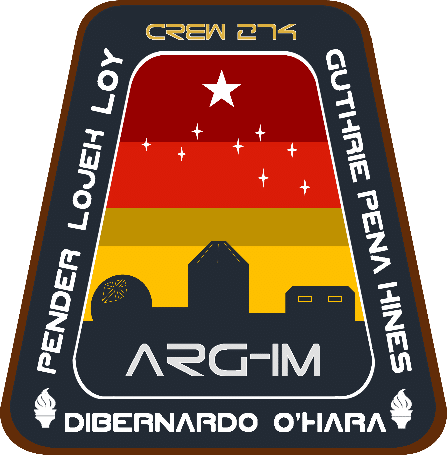
Note: This article is part 1 of a two-part series of the American Public University System Analog Research Group (AARG) recent mission at the Mars Desert Research Station (MDRS) in Utah.
In early 2021, the American Public University System’s Analog Research Group (AARG) began preparations for its first analog astronaut mission (ARG-1M) at the prestigious Mars Desert Research Station (MDRS). This research station is owned and operated by The Mars Society.
The crew endured various challenges created by the pandemic, funding, military and professional obligations, research constraints, weather, and restrictive timelines. However, we never wavered in our commitment to the goal of achieving this mission at MDRS.
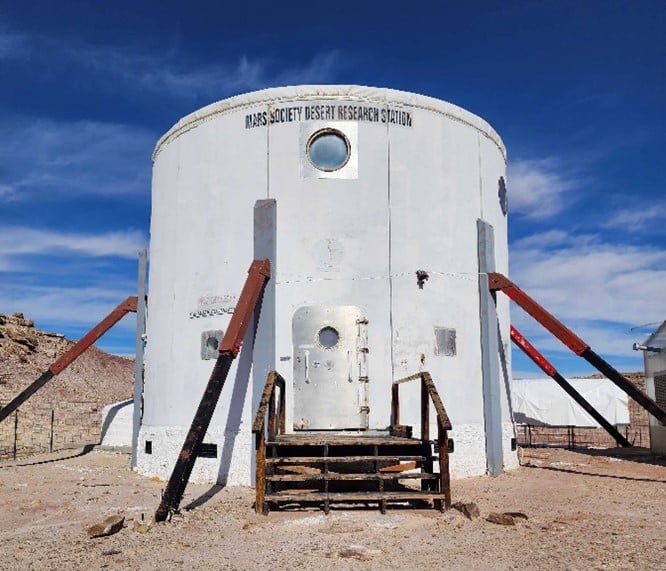
Maintaining an unfailing positive outlook, they approached every challenge with enthusiasm. Eventually, perseverance finally paid off as, after nearly two years of preparations, the ARG-1M crew (MDRS crew 274) officially entered the MDRS analog habitat in late January 2023.
The crew spent 14 days at the MDRS in the Utah desert, living in conditions similar to those on Mars in terms of both the terrain and the isolated environment. The crew performed dozens of research studies, such as:
- Physiological and behavioral studies
- Solar and astronomical observations
- Botany experiments
- Logistics studies of cache networks
- Contingency extra-vehicular activities (EVAs)
- Space habitat structures and engineering
- Resource sustainment
- Stress reduction methods
- Community submission projects
For this article, some members of the AARG eight-member crew provided an overview of their experiences during their 14-day analog mission at MDRS. These members include:
- Tyler “Houston” Hines, Greenhab Officer (GHO)
- Nicolas “X-Man” Pender, Health and Safety Officer (HSO)
- Salina “Nova” Peña, Chief Astronomer
- Alexis “Kepler” Lojek, Crew Engineer
- Noah “Phoenix” Loy, Heliophysics

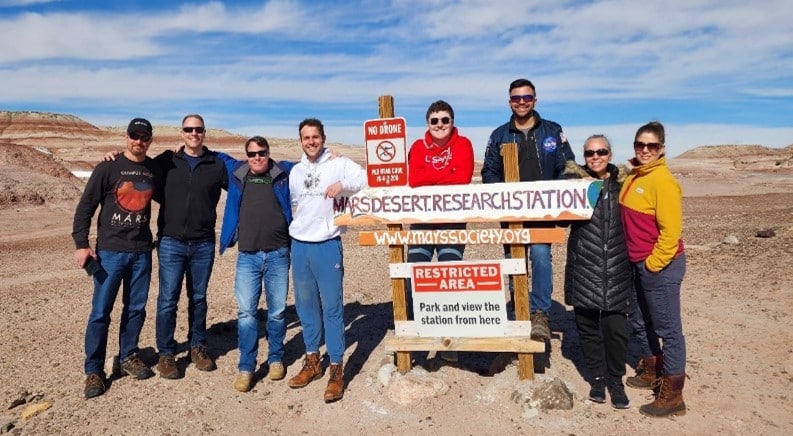
Tyler Hines: The Mars Desert Research Station Provided an Ideal Opportunity for Space Research
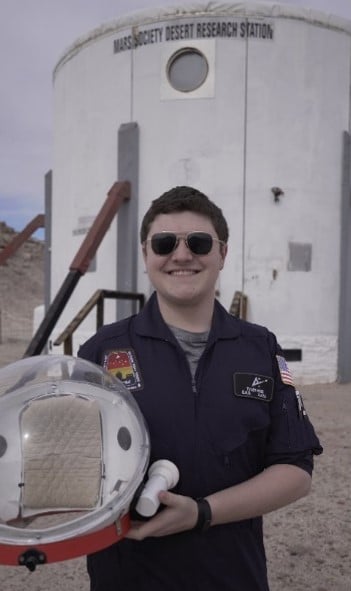
The argument can be made that every analog facility provides numerous advantages and disadvantages based on its conceptual design and general operations. However, the impressive and unique location of the MDRS analog complex provided an ideal opportunity for space research.
It allowed us to test and research a wide variety of experiments and projects across numerous scientific fields of study in a highly realistic, Martian-like environment. Moreover, I felt that in addition to the unique geological landscape, the isolation of our facility only further supported our focus on creating a simulated mission to Mars.
Attention to detail was a constant part of our everyday operations. For instance, there was the daily requirement to draft mission and role-specific reports. That work provided a noteworthy sense of both crew and personal responsibility and a focus to not only meet, but exceed, mission expectations for the benefit of our team.
These foundational operations and protocols served as daily reminders to strive to perform daily tasks and research at the highest level of efficiency and capability. We also sought to support our fellow crewmates in their own research.

Such foundational operations and protocols served as daily reminders to not only strive to perform daily tasks and research at the highest level of efficiency and capability, but to do so while supporting fellow crewmates in their own research. – GHO Tyler Hines
In closing, I truly feel that the time spent participating in this once-in-a-lifetime analog experience has not only further developed my academic background as a student at the University but has helped to prepare me to be an active and contributing professional in the modern spaceflight industry.
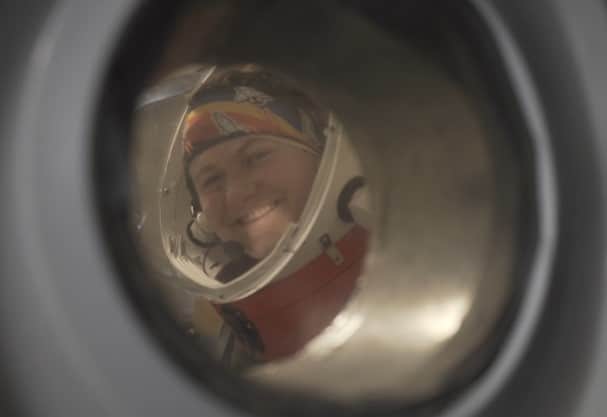
Nick Pender: It Was a Long Road to Making MDRS a Reality

My experience on the ARG-1M mission to the Mars Desert Research Station has left me feeling accomplished, grateful and excited for its possibilities.
The road to making ARG-1M a reality was long. I was originally selected as a backup crew member in the summer of 2021. Shortly after, I was informed that another crew member had dropped out, and I accepted a position on the primary crew as the Health and Safety Officer.
With the MDRS mission projected to occur in 2023, I knew it would be an endurance test. More crew members would drop out, and new ones would join the mission to create what would be a formidable crew.

The day we arrived at MDRS was exciting, yet humbling. As with anything that involves a long time of planning and thinking, you build up this idea in your head of what it will be like.
Finally, getting to experience MDRS in person is a reality check. The terrain is Mars-like, and you see that right away as you drive down to the entrance at Cow Dung Road.
So much was accomplished on this MDRS mission. The science we conducted, the relationships we formed, and the ideas born out of this mission are the product of some amazing people banding together to make this dream a reality.
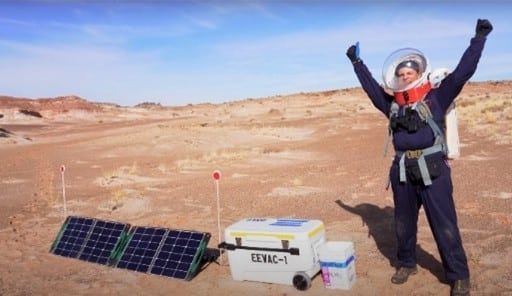
It has been one of the most rewarding experiences in my academic journey. I would likely not have had the chance to pursue this endeavor were it not for attending the University.
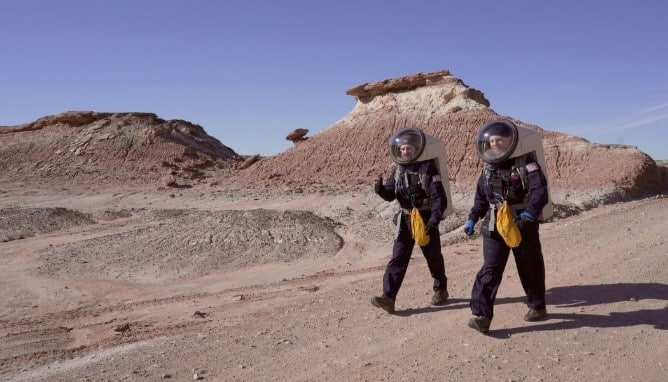
HSO Pender and Habitat Specialist Bill O’Hara execute the Logistics Cache Hike EVA, a hike that would be over two hours long on the Martian desert on Sol 7. Image courtesy of Tony DiBernardo.
Salina Peña: Using the Musk Observatory at MDRS Was My Favorite Part
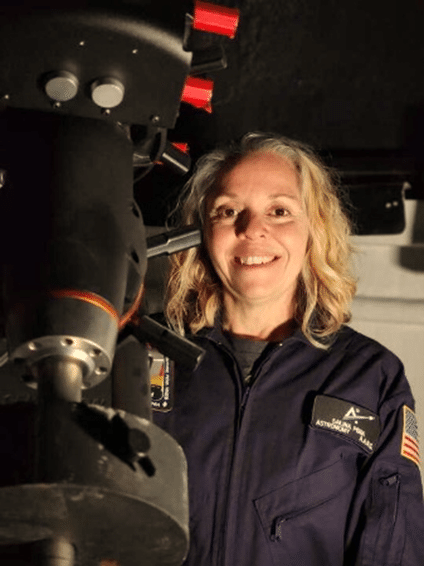
The experience of the analog habitat at MDRS has been an illuminating one, considering it was my first mission as a university student. From participating in extravehicular activities to observing the night sky, it has placed a permanent smile from ear to ear on my face.
As the crew astronomer, I observed solar activity and variable stars, and I ensured the crew was well fed. Of course, I could not have done it without the help of my colleague, Noah.
My favorite observation by far was looking at the solar prominence and the sunspots using the Musk observatory. The sunspots looked like small islands on the surface of the Sun. Unfortunately, my observation of the High-Amplitude Delta Scuti (HADS) did not go as planned.
During our mission, I did get homesick and wanted to talk to my kids every day. That was the hardest part. I have never been away from my family that long before this trip.

Being in isolation was not an issue for me at all. The living quarters were small but manageable.
It was nice to have a bed all to myself and not with my youngest child at times. I will miss the family meals at the table and the solitude with Crew 274.

Overall, I could not have asked for a better crew. Looking back, we had more positives than negatives, at least in my eyes. We started together online as friends, but after spending almost three weeks with them, I consider them my space family now.
I would go to the Moon and Mars with this crew any day! – Salina Peña
Lex Lojek: The MDRS Analog Habitat Makes You Feel That You Are Really on Mars

Having experienced two other analog habitats at the Inflatable Lunar/Mars Analog Habitat at the University of North Dakota, the first word I would say regarding MDRS is “environment.” The view outside the windows of the MDRS analog habitat is spectacular, and it makes you feel as though you are really there on Mars.
The second word I would use to describe my personal experience at MDRS is “crew.” Our crew meshed so well it made the experience that much better.
We all brought such a sense of both wonder and intellect to the group; we are lucky to have had each other. We bounced ideas off each other, joked with each other and supported each other so that everyone felt included.
Also, the word “community” comes to mind. The eight of us formed a small community when we were there, and I would daresay that I have not felt closer to any other analog crew.
Finally, the most important word I would use to describe the group is “experience!” Our group’s collective experience was so varied.
It allowed many different ideas to be brought to the table and made the experience that much more fun. If I had to go to Mars or the Moon for real, I would go with this crew!
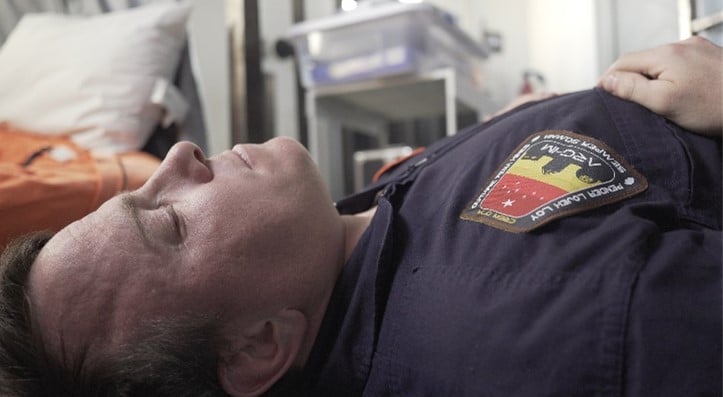
My thanks to everyone for this opportunity. I absolutely believe that AARG will continue to support amazing crews and missions going forward.
Related: Students Visit Aquarius: The World’s Only Underwater Research Laboratory
Noah Loy: Adaptability and Resourcefulness Were Useful for Dealing with Mission Setbacks

During my time at MDRS, I had the privilege of working alongside a dedicated and talented crew. I had the chance to explore heliophysics and astronomy, as well as to experience the unique bonding and camaraderie that comes from collaborating with professionals in the human spaceflight industry.
Despite occasional setbacks, our crew remained adaptable and resourceful. Throughout our time at MDRS, our team’s cohesion and shared passion for human spaceflight served as a constant source of inspiration.
The knowledge and skills we gained will continue to inform and inspire our work in the human spaceflight industry. – Noah Loy

The relationships we built and the experiences we shared provided a priceless opportunity for professional growth and personal connections. The diverse talents and expertise within our crew enabled us to tackle complex problems and expand our knowledge of the cosmos.
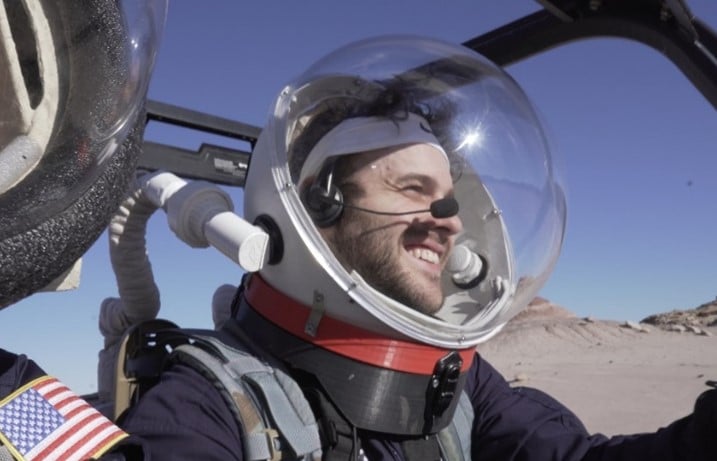
My experiences at the Mars Desert Research Station provided a unique and invaluable glimpse into the world of human spaceflight simulation, training, and testing. As we studied heliophysics and astronomy, our team overcame challenges, adapted to new situations, and ultimately contributed meaningful data to the understanding of our universe.
The friendships and professional connections we formed during our time at MDRS will undoubtedly endure. The knowledge and skills we gained will continue to inform and inspire our work in the human spaceflight industry.
More Information about AARG and the Mars Desert Research Station
To read more about AARG, please visit our website or email AARG at apusarg@gmail.com. Our website has:
- Publications about past and current missions
- The ARG-1M’s Mission Summary and Research Summary
- Daily reports
- Photos and videos
We would like to thank the efforts of everyone who supported us and made this mission possible:
- The founders and members of AARG
- The APUS Grant Office
- The Mars Society
- AARG Faculty Advisor Dr. Kristen Miller
- Former AARG Program Manager Scott Van Hoy
- ARG-1M (Crew 274) Flight Director Terry Trevino
- Our friends, families and colleagues
Read part 2: Mission to Mars: AARG’s First Mission at the MDRS – Part 2
About the Authors
Tony DiBernardo is a graduate of American Public University, recently completing his master’s in space studies. He holds a bachelor of arts in communications and a certificate in science communication from Northwestern University.
Currently, Tony is the Communications Officer for AARG and served on crew ARG-1M as the crew journalist. His work has resulted in a full-length documentary covering this mission, “Analog: A Documentary of the ARG-1M Analog Mars Mission.” His current endeavors include utilizing new forms of media to discover the most effective ways to bring science to the young generations.
S.E. Guthrie is a current graduate student with American Military University working toward her master’s in space studies with a concentration in astronomy. She holds a bachelor of science in aerospace sciences and a certificate in military leadership studies from American Military University, an associate of science in aerospace technology and an associate of science in paralegal studies from the Community College of the Air Force.
Currently, she is an active member of the AARG, serving as the programs’ Recruitment Coordinator. S.E. has served on three analog missions as a Mission Specialist and Mission Commander. Additionally, she is the principal investigator and co-investigator on several active projects which include contingency EVAs; mobility and modular devices for spacesuits, plant growth, and radiation exposure on Martian surface; and communication signals enhancement in reduced gravity for deaf individuals.

Comments are closed.